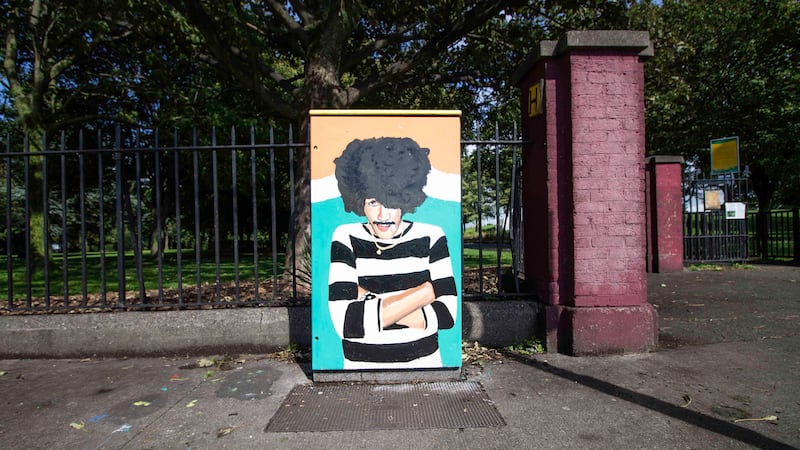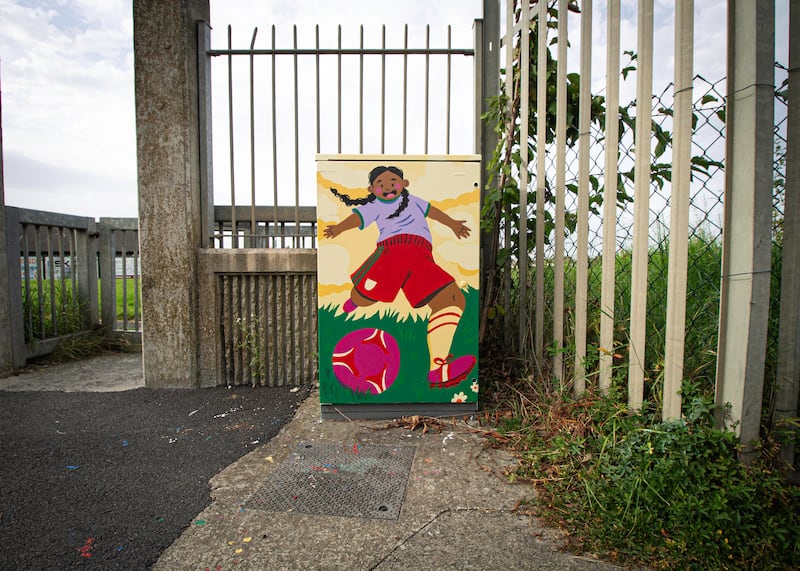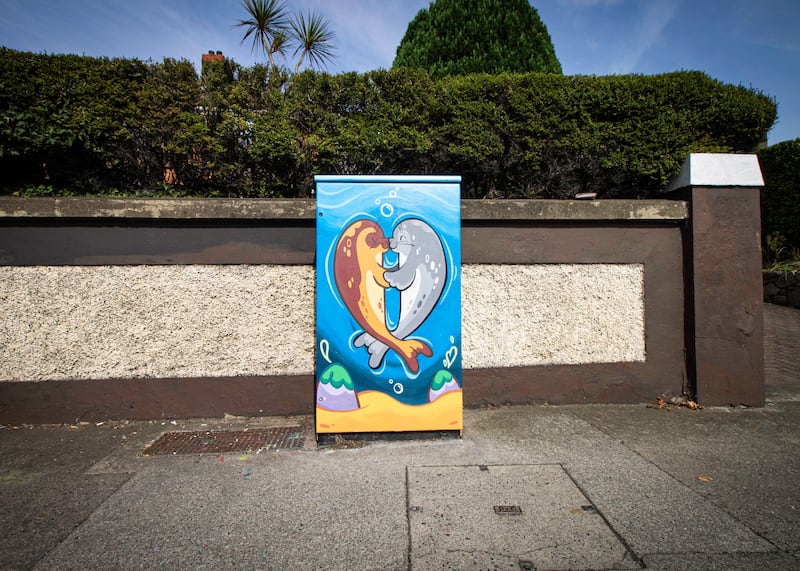On street corners around Dublin, small grey boxes quietly manage the flow of traffic. Vehicles, bikes, pedestrians and pesky e-scooters are beholden to their will. Though designed to blend in with their surroundings, in recent years these traffic light control boxes have also served a more enlightening purpose.
Today, approximately 500 of these boxes display artwork for the people of Dublin and brighten up an often-grey urban landscape. The county’s four councils have funded artists to transform them into urban artworks through the Dublin Canvas project, which liaises with local authorities to get the artists the permissions, funding and resources they need.
“It is important to make public art accessible,” says David Murtagh, the creative director and founder of the project. “Signal boxes are always located at junctions. That makes them perfect for artwork because you naturally have to stop.”
Since 2015, Murtagh has helped 853 artworks come to life, two-thirds of which have been funded by Dublin City Council. Some of these have been repainted over the years. The average lifespan can be anywhere from three years in the city centre (which tend to get tagged by street artists more often than the suburbs), to about five years elsewhere.
READ MORE
He saw a similar project in 2006 while backpacking in Brisbane, Australia, and wanted to replicate its success. At first, he worked with artists in wrapping boxes around Temple Bar in 2008 (insurance issues held back the painting at the time, he says), and after being made redundant from Diagio in 2014, he sought to revive the idea on a larger scale. Fifteen boxes were painted in 2015. The next summer they upped it to 75 pieces and have commissioned about 100 a year since. The artists volunteer their time and effort and receive expenses of up to €300 per artwork.
The project is split into two categories: history, heritage and culture; and nature, which makes up about two-thirds of artworks. Among the artists are the usual suspects you might expect: graphic designers, street artists, muralists. But Murtagh stresses, “The beauty of Dublin Canvas is it’s an open call for anyone.”
“We’ve had a variety of artists, from 18 right up into their 70s or 80s,” the amateur artist and modelmaker says, proudly. “You have a full spectrum of college students right through to retirees. We’ve had doctors, construction workers, barbers, baristas, barristers, eye surgeons – you name it. It would be easier to list occupants that haven’t taken part. People say that, worldwide, street art projects are heavily male-dominated. Dublin Canvas appears to be more women than man – about two thirds.”




One in four boxes has been painted by non-Irish nationals from almost every continent, most commonly hailing from Poland, Brazil, France and Mexico. The diversity of creative influences is evident in the finished products awaiting Dubliners on street corners.
There are similar projects in other Irish cities such as Cork and Galway, but Murtagh thinks his was the first in the country. Having just finished the most recent round of works, he expects the next artist callout to happen the weekend after St Patrick’s Day 2024, with an aim to paint a new round next summer.
For more information, check out dublincanvas.com




















